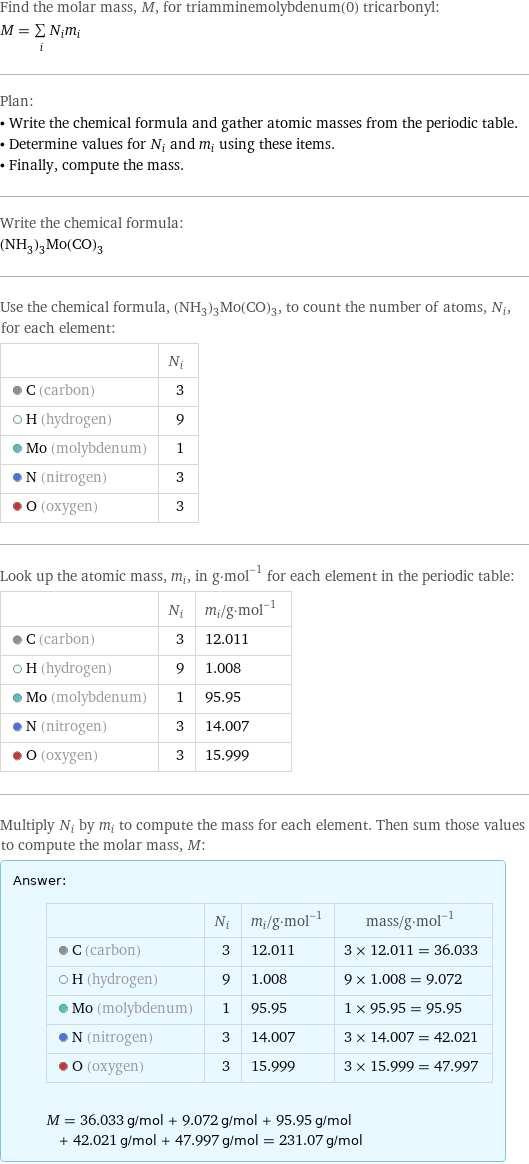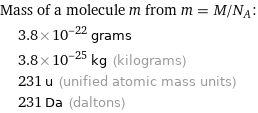Input interpretation

triamminemolybdenum(0) tricarbonyl | molar mass
Result

Find the molar mass, M, for triamminemolybdenum(0) tricarbonyl: M = sum _iN_im_i Plan: • Write the chemical formula and gather atomic masses from the periodic table. • Determine values for N_i and m_i using these items. • Finally, compute the mass. Write the chemical formula: (NH_3)_3Mo(CO)_3 Use the chemical formula, (NH_3)_3Mo(CO)_3, to count the number of atoms, N_i, for each element: | N_i C (carbon) | 3 H (hydrogen) | 9 Mo (molybdenum) | 1 N (nitrogen) | 3 O (oxygen) | 3 Look up the atomic mass, m_i, in g·mol^(-1) for each element in the periodic table: | N_i | m_i/g·mol^(-1) C (carbon) | 3 | 12.011 H (hydrogen) | 9 | 1.008 Mo (molybdenum) | 1 | 95.95 N (nitrogen) | 3 | 14.007 O (oxygen) | 3 | 15.999 Multiply N_i by m_i to compute the mass for each element. Then sum those values to compute the molar mass, M: Answer: | | | N_i | m_i/g·mol^(-1) | mass/g·mol^(-1) C (carbon) | 3 | 12.011 | 3 × 12.011 = 36.033 H (hydrogen) | 9 | 1.008 | 9 × 1.008 = 9.072 Mo (molybdenum) | 1 | 95.95 | 1 × 95.95 = 95.95 N (nitrogen) | 3 | 14.007 | 3 × 14.007 = 42.021 O (oxygen) | 3 | 15.999 | 3 × 15.999 = 47.997 M = 36.033 g/mol + 9.072 g/mol + 95.95 g/mol + 42.021 g/mol + 47.997 g/mol = 231.07 g/mol
Unit conversion

0.2311 kg/mol (kilograms per mole)
Comparisons

≈ 0.32 × molar mass of fullerene ( ≈ 721 g/mol )

≈ 1.2 × molar mass of caffeine ( ≈ 194 g/mol )

≈ 4 × molar mass of sodium chloride ( ≈ 58 g/mol )
Corresponding quantities

Mass of a molecule m from m = M/N_A: | 3.8×10^-22 grams | 3.8×10^-25 kg (kilograms) | 231 u (unified atomic mass units) | 231 Da (daltons)

Relative molecular mass M_r from M_r = M_u/M: | 231